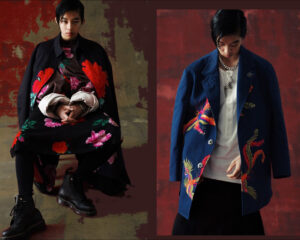Bad Bunny, the global phenomenon of reggaeton and urban music, has become a symbol of identity and cultural resistance for millions around the world. Among the recurring themes in his music and aesthetic, there are direct and indirect references to emblematic places of the Latin diaspora, with New York—known colloquially as “NuevaYol” in Puerto Rican slang—holding a special place in his narrative. Here we explore how Bad Bunny uses the figure of Nueva York as an extension of the Puerto Rican and Latin experience, encapsulating the life of the barrios while highlighting globalization and the fight to preserve authenticity in an increasingly homogenized world.
NuevaYol: The Pulse of the Latin Diaspora
NuevaYol, a colloquial term primarily adopted by Puerto Ricans to refer to New York, is more than a city; it is a cultural symbol. Since the massive migration of Puerto Ricans to the U.S. mainland during the mid-20th century, New York became a key space for constructing Puerto Rican identity outside the island. Neighborhoods like The Bronx, Spanish Harlem, and Brooklyn became filled with music, colors, and traditions reflecting the heart of Puerto Rico. This process of adaptation and cultural resistance has served as inspiration for generations of artists, including Bad Bunny.
Bad Bunny, known for his lyrics that capture both the realities of young Latinos and the vibrant elements of urban culture, has alluded to NuevaYol in his songs and projects. Beyond his music, the “Conejo Malo” (Bad Bunny) represents this connection between the Caribbean and the streets of New York, reflecting a mix of pride, nostalgia, and resistance in the face of social and economic hardships.
The Sound of the Streets and New York’s Influence
Bad Bunny grew up in Vega Baja, Puerto Rico, a place where reggaeton and urban music are not just genres but a way of life. However, his sounds and lyrics transcend the geographical limits of the island to resonate with the experiences of Latinos in cities like New York. In songs like ”¿Quién Tú Eres?” and “Soy Peor,” one can feel that connection to the streets, the graffiti, the endless nights, and the struggles of working-class communities—a sentiment that also defines life in New York neighborhoods.
Reggaeton, which originated in Puerto Rico during the 1990s, was significantly influenced by hip-hop, a genre that flourished in New York among African American and Latino communities. This cultural exchange between Puerto Rico and New York is a key point in the sound that Bad Bunny has elevated to a global level. His music incorporates the characteristic rhythms of the Caribbean as well as elements of New York trap and hip-hop, creating a blend that feels authentic to those who have lived in both realities.
Fashion, Aesthetics, and New York
Another way Bad Bunny reflects New York’s influence is through his sense of fashion and visual aesthetics. Known for breaking traditional gender norms and challenging cultural expectations, Bad Bunny’s style is reminiscent of the icons of hip-hop and New York’s street culture. From his collaborations with brands like Adidas and Gucci to his wardrobe choices at events and in music videos, the “Conejo Malo” presents himself as a figure who can seamlessly mix the urban and the sophisticated without losing authenticity.
New York, as a capital of fashion and urban culture, has been a key hub for the rise of these hybrid trends. On various occasions, Bad Bunny has paid homage to the aesthetics of The Bronx, the vibrant colors of Spanish Harlem, and Brooklyn’s defiant attitude, highlighting the intersection of music, art, and daily life.
Social Struggles and the Voice of a Generation
NuevaYol’s influence on Bad Bunny extends beyond artistry. It is also reflected in his social activism and his ability to use his platform to amplify issues affecting both Puerto Rico and its diaspora. In 2020, during the protests against police brutality and racism in the United States, Bad Bunny spoke out in support of the Black Lives Matter movement, emphasizing the similarities between the struggles of African Americans and Latinos in cities like New York.
Additionally, in his music and interviews, the artist addresses topics like gentrification, displacement, and the lack of opportunities in Latino neighborhoods, both in Puerto Rico and the U.S. These issues are especially relevant in New York, where historically Latino communities constantly face pressure to leave their homes due to rising living costs. By speaking about these realities, Bad Bunny connects not only with his fans in Puerto Rico but also with those who have experienced these same struggles in the Big Apple.
Globalizing the Barrio
One of Bad Bunny’s most significant achievements has been globalizing the experience of the barrio without diluting its essence. Although his music plays in stadiums and festivals around the world, his lyrics still capture the emotions, dreams, and frustrations of those living in neighborhoods like those in New York. Songs like “Yo Perreo Sola” and “Safaera” celebrate freedom, resistance, and the unique energy of the Latin community while critiquing the systems that seek to control it.
New York, with its unique cultural blend and history of resistance, perfectly encapsulates this duality. It is a place where Caribbean roots mix with global influences, creating an identity that is both local and universal. Bad Bunny, as an icon of this new era, represents this connection, showing the world that the barrio, in all its forms, is an unstoppable force.
NuevaYol and Bad Bunny’s Legacy
In Bad Bunny’s work, NuevaYol is not just a place; it is a symbol of the diaspora, cultural resistance, and the possibility of globalizing the local without losing authenticity. From his music to his fashion, the “Conejo Malo” has captured the essence of what it means to be Latino in the 21st century, blending influences from Puerto Rico and New York to create something entirely new and universal.
In a world where cultural and geographical boundaries are blurring, Bad Bunny stands as a bridge between generations and geographies, connecting the streets of Vega Baja with the avenues of New York. In his voice, NuevaYol is not just a destination for the dreamers of the diaspora but a reminder that, no matter where we are, we carry our barrio with us.
No comments yet.







